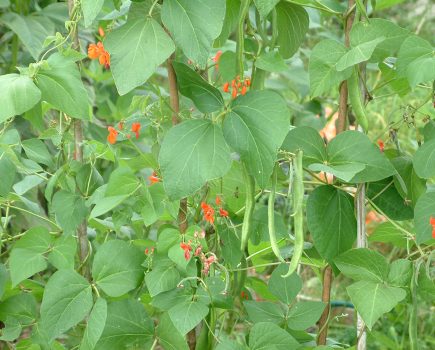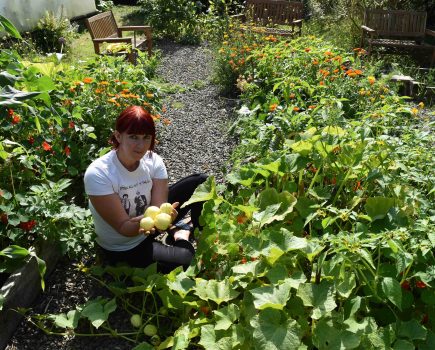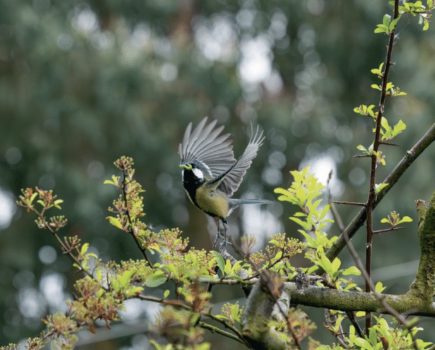Apart from helping to preserve Britain’s heritage, there are numerous benefits to be had when smallholders create their own wildflower meadow, as Leslie Bliss discovers
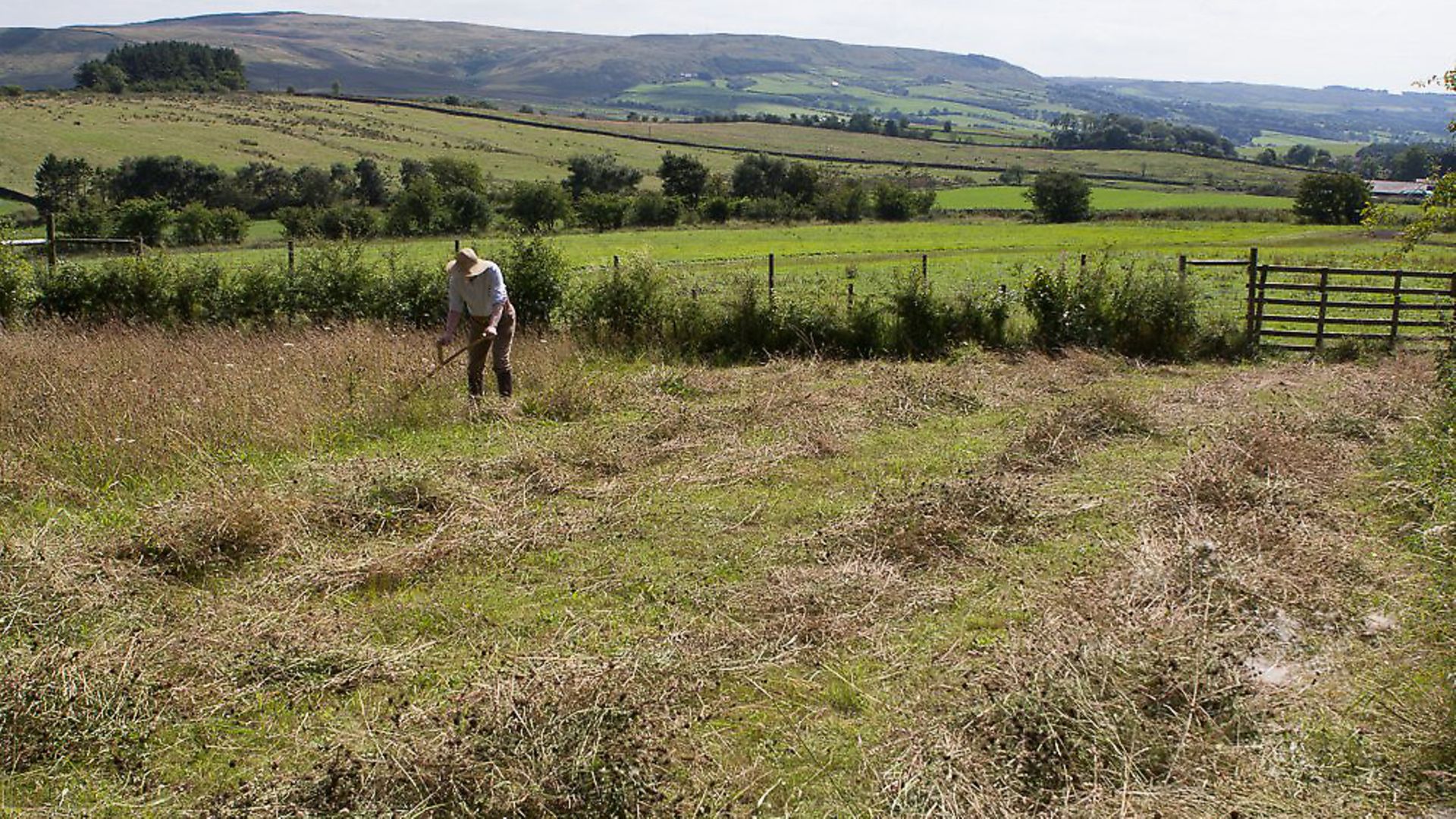
A staggering 97% of wildflower meadows have been destroyed in the UK since World War II — we’re talking 7.5m acres, which is 1.5 times the size of Wales — but there is a growing groundswell of passionate people reversing this shocking trend.
The Prince of Wales is one of the most high-profile exponents of wildflower meadows, having established one at Highgrove more than 30 years ago. More recently, in 2013, he inspired a project to mark the 60th anniversary of the Coronation called Coronation Meadows.
The concept is to identify one flagship ancient, species-rich wildflower meadow in every county across the UK and for these meadows to provide seeds for the creation of new meadows in the locality. It is run in conjunction with three charities: Plantlife, The Wildlife Trusts and the Rare Breeds Survival Trust. And there are many other initiatives around, such as Plantlife’s Save Our Magnificent Meadows and Network 4 Nectar.
Keith Datchler OBE is the owner of one of the country’s 60 Coronation Meadows — Coach Road Field in East Sussex — that has helped to create nearly 1,000 acres of new wildflower meadows.
He says: “There is a corner in every farm that could be representative of this kind of environment. Then you get connectivity. It means future generations will be able to walk through meadows like these.”
The benefits
Apart from helping to secure Britain’s wildflower heritage and creating something of beauty, why go to the effort and cost of planting and maintaining a wildflower meadow?
Of course, if you keep bees it is a no-brainer. However, there is so much more to it.
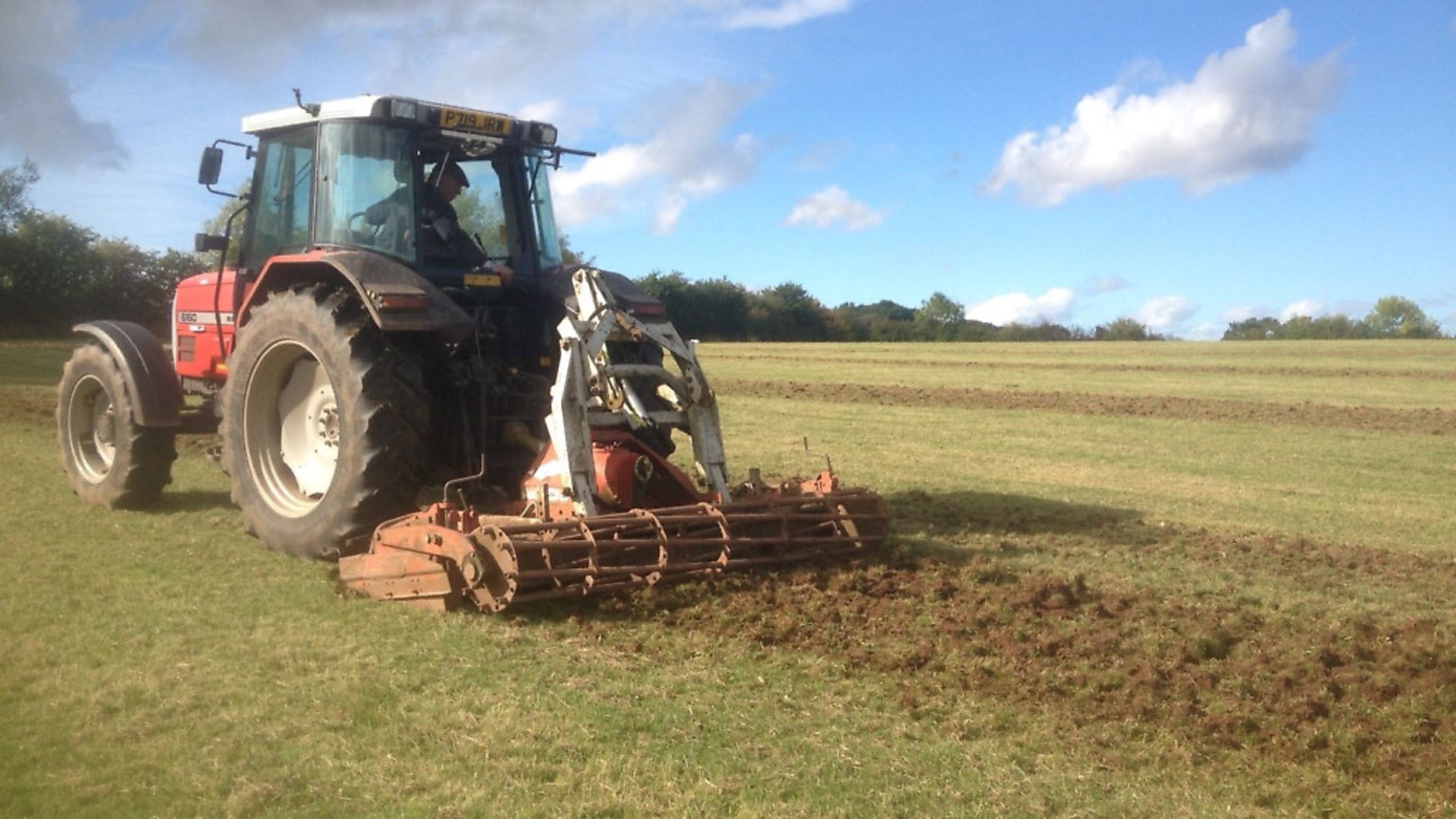
Royal Horticultural Society (RHS) chief horticulturalist Guy Barter explains: “It not only helps nature, boosting pollinator numbers as well as other beneficial insects, predators and birds, but you can also save and sell the seed, making it a great crop for smallholders.”
And there’s more. If you are a smallholder who has livestock, you have more reasons than most to look into this, as meadow hay is another valuable crop in more ways than one.
Plantlife botanical specialist Dr Trevor Dines, who is heavily involved in the Coronation Meadow project, has a five-acre smallholding that boasts a wildflower meadow and Highland cattle.
He says: “We don’t know the full extent of all the benefits. You don’t feed your kids Weetabix for every meal, in the same way that you don’t feed your livestock just one type of grass. Meadow hay is rich in protein, minerals and amino acids. The roots from the various wildflowers reach down into different parts of the soil, creating a different nutrient profile to hay harvested from a single grass variety. We know meadow hay is high in tannin, which is recognised as being good for the stomach and helps to control the worm burden in livestock.
“Traditionally, upland farmers in Wales always had a fenced-off wildflower meadow as a ‘cae ysbyty’ or ‘hospital field’ for sick animals and they used its hay as ‘recovery feed’, essentially using the herbs it contains as medication.”
Nor do you need expensive machinery to make your own hay as a scythe will do the job beautifully — as well as keep you fit and an ancient tradition alive.
Richard Brown of Emorsgate Seeds, which holds a royal warrant and collects seeds from the Highgrove wildflower meadow, enjoys nothing more than spending a summer’s evening scything his meadow.
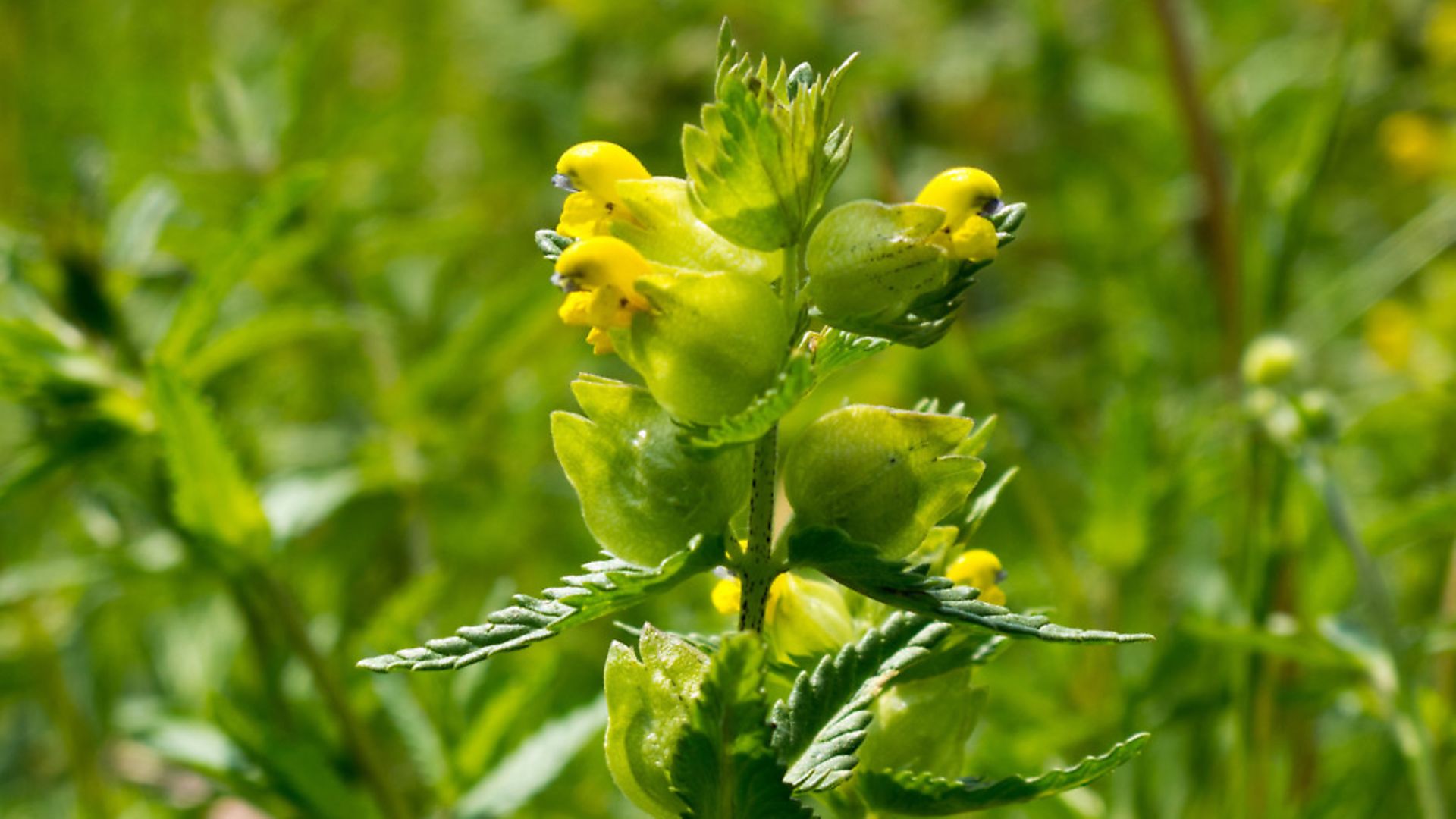
“I strip cut a bit each day and bale up a section at a time, having left it to dry for three to five days. It means you don’t risk losing your whole crop if the weather turns,” he explains.
Location, location
So where do you start? The key appears to be in finding the right piece of land, one that is nutrient poor, so grass doesn’t overpower the wildflower plants. As farmers spend their life improving soil fertility this can prove challenging.
Richard says: “Work with nature. Choosing the right spot is important. You don’t want to use somewhere where a compost heap has been located in the past, for example. Ideally you want to find somewhere in full sun, where not much grows. The plants growing there will give you a good indication of soil fertility. If there are a lot of dock weeds, thistles and nettles, and the grass is lush, it is likely to be too fertile and therefore unsuitable.”
A more scientific approach involves using a phosphate index test kit, but soil testing and assessing soil texture is involved and difficult to interpret for growing wildflowers.
If you don’t have an area that has poor soil fertility, it is possible to create it by scraping off the topsoil, as Cathryn and David Higham have done successfully in Lancashire.
Soil preparation
Stage two, soil preparation, is just as important as choosing the right location. Richard says: “Clear existing weeds, either by using a weed killer or digging up the weeds by hand. Prepare the ground in the same way as you would if you were sowing a lawn.”
Trevor confirms that it is difficult to avoid using herbicides at this stage: “We’ve had an 85% success rate establishing new meadows and soil preparation has proved critical. You want to expose 50-80% of the soil as bare earth before seeding. We generally do this one of two ways, either by using a power harrow, which turns the top soil, or a Ryetec flail mower, which cuts the grass and exposes soil without disturbing it.”
Sourcing seed
Using a local donor meadow as a seed source means that you will grow indigenous varieties as well as it being a cheaper option compared to buying from a seed merchant — the latter will cost you around £600 per acre, while collecting seed from a donor meadow will set you back about the same for 2.5 acres — but it’s not without its challenges.
Trevor says: “You need to find a meadow that matches your soil conditions, which may not be your local Coronation Meadow. In that scenario, approach your local Wildlife Trust.
“If you are using green hay from a donor site, it has to be transferred on the same day to the previously prepared recipient field as it will heat up quickly while fermenting which kills the seeds. Using a brush harvester to collect seed allows you to dry it, which gives you a couple of weeks of leeway.”
If you are unsure of your soil type and want to have the flexibility of sowing in the spring, as well as at haymaking time, Richard recommends spreading the risk. “We sell what we call our ‘blunderbuss’ mix, which includes a core set of species that can survive anywhere, such as ox-eye daisies, as well as varieties ranging from ones that like wet, heavy clay to free-draining chalky soil.”
The first year
Richard warns: “Getting through the first year is the hardest. Don’t expect any flowers as the perennials need time to establish, and be realistic with your expectations as regards colour palette and the length of the flowering season on the whole — it’s all over by mid-summer.
“Top regularly as you would a long lawn — cutting perhaps four or five times, depending on growth — to keep the weeds and grass under control. Remove any cuttings so that you don’t enrich the soil. Ox-eye daisies may flower the first year if you don’t mow, but if you prune them back it will make for a stronger plant.”
Maintenance
There is a myth that all you need to do to maintain a wildflower meadow is to give it one cut in September or October. Richard disputes this.
“It’s too late for making hay as the grasses will have reabsorbed the protein it has produced into the roots by then and you will end up with lots of grasses and knapweed.”
He believes that old fashioned meadow management is best, which involves three cuts per year, removing cuttings to avoid adding nutrients.
“The first one should be in the spring to reset the balance. Or you could let livestock graze the land. Don’t cut or allow livestock to graze from April to mid-summer.
“Your second cut is when making hay, which you can do in sections from end-June through to mid-August. The main cuts will be in mid-July, when the rattle seed are ripe and rattle in their pods. Leaving the hay to dry for three to five days also allows the seeds to drop to the ground,” he notes.
“The subsequent regrowth in the autumn, known as the ‘aftermath’, can either be grazed off by livestock or you can take a third cut. Grazing animals has added bonuses as they remove any thatch that builds up and their hooves trample in the seed and create bare patches.”
Trevor “shuts up” his meadow earlier, removing his cattle at the end of February — the timing depends on location — allowing them back on the meadow in the autumn following the haymaking cut. He then lets them graze there over the winter to keep the grass under control.
“There is no one right way to manage a meadow and it depends on the situation and what your aim is. What he does promise, though, is: “With the right management, the meadow will develop its own character over time. If you give it a good start, the magic will happen.”
For information, visit:
– plantlife.love-wildflowers.org.uk/wildflower_garden/how_to_grow_a_wildflower_meadow/
– magnificentmeadows.org.uk/advice-guidance
Transforming a meadow against the odds
Completely by chance, Cathryn and David Higham took on an existing wildflower meadow in 2007. By reading a few books — Sticky Wicket: Gardening In Tune With Nature by Pam Lewis, Where Have All The Flowers Gone?: Restoring Wildflowers To The Countryside by Charles Flower and Meadows by George Peterken — and asking a couple of experts for advice, they set about enhancing it. Then, a few years later, they challenged themselves to create a completely new meadow against the odds on a fertile site, transforming it into a stunning “chocolate box” tapestry of colour in the first year with a cornfield annual seed mix.
Cathryn recounts their journey: “We bought two acres of mature woodland with panoramic views across to the Bowland Fells in Lancashire. It included a disused quarry — the stone had been used to build the nearby 200-year-old farmhouse — which turned out to be a wonderful old wildflower meadow.
“We undertook a plant survey with the help of a local retired botanist and found more than 80 species of grasses and wildflowers, including yellow rattle. We were advised to increase this hemiparasitic species as it lives on other plants, thereby creating open areas for wildflowers to thrive, and reduces grass growth.
“Normally sheep trample the seed into the ground in the autumn. However, as we have no livestock, we spent a damp, cold autumn weekend using an old adze to create divots and we smeared yellow rattle seeds, which we had collected locally with the landowner’s permission, into the soil.
“By spring, the memories of our aching muscles had faded as the yellow rattle seeds germinated. Over the years, the grasses have continued to weaken as the yellow rattle has increased and the wildflowers have thrived.
“In 2014, we had the opportunity to buy part of the field next to the quarry, which was modern, well fertilised grassland. Inspired by my husband’s memories of 1970s summer holidays spent on a local farm when all the meadows were full of flowers, David decided to try and create a new wildflower meadow as diverse as the existing old quarry meadow.
“Rather than waiting decades for the land’s fertility to reduce, we used a fast-track approach. In the autumn of that year, we stripped the turf using a digger to get rid of the weed burden and the highly fertile topsoil, which was used by a local farmer to level his field.
“We raked the subsoil and walked over it to firm it. We then seeded the one eighth of an acre by hand with wildflower seeds matching our existing meadow plus a nurse crop of cornfield annuals. We bought the cornfield annual seeds, but collected the remainder ourselves, including sweepings from the barn floor of the farmer who has a Coronation Meadow. The first year’s display of cornfield annuals was spectacular and, as they faded, the perennial wildflowers have gone from strength to strength over the years.
“Maintenance involves using a mower on the highest setting in April, then we scythe from mid-July, with the aim of finishing by the end of the month. We hand weed docks and thistles with the occasional use of Roundup gel sticks. We haven’t added any plants since we seeded the land.
“We proved that it can be done and it took less time than we originally thought — it’s certainly worthwhile.”
Image(s) provided by:
Archant
Archant
Archant



